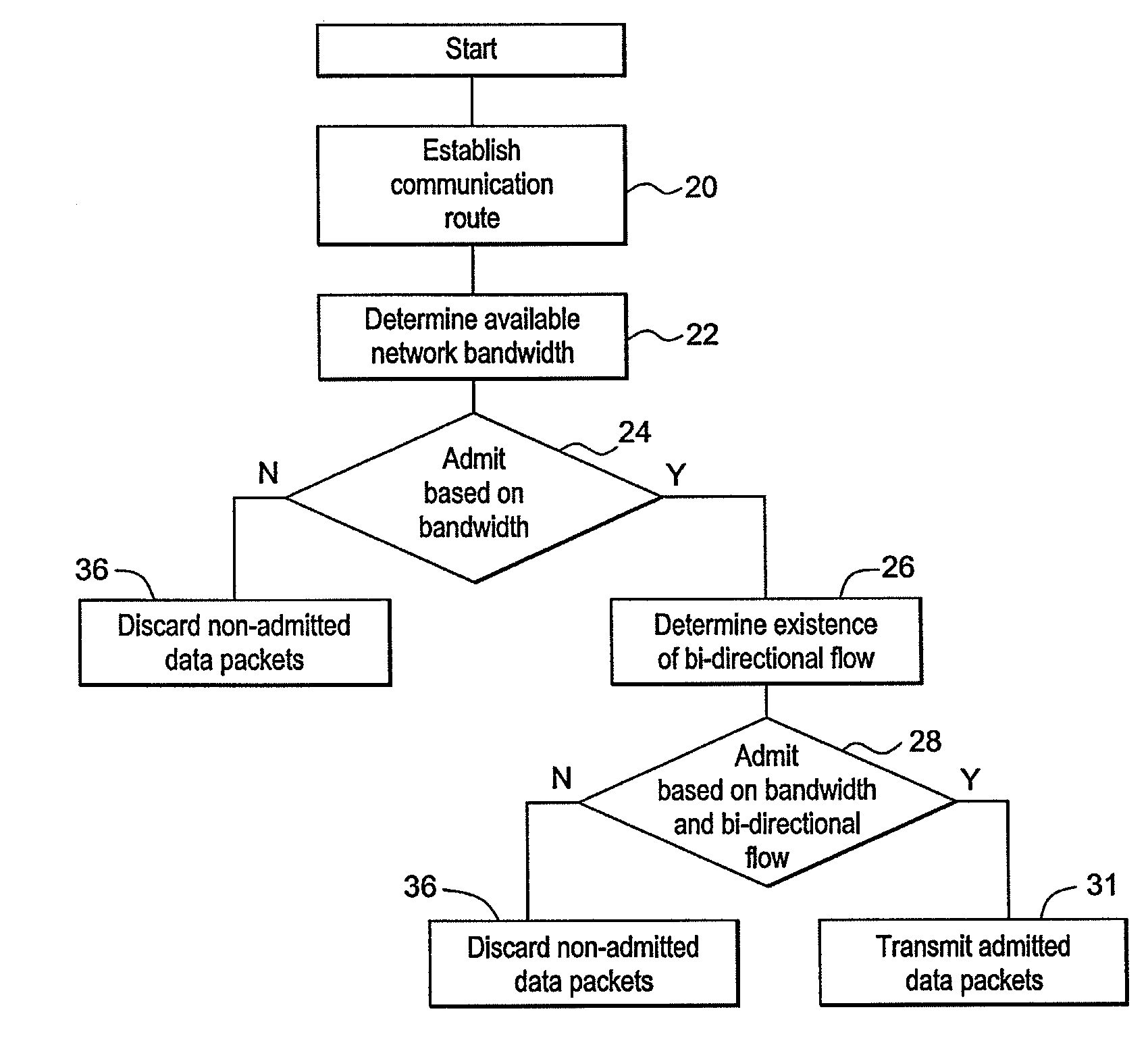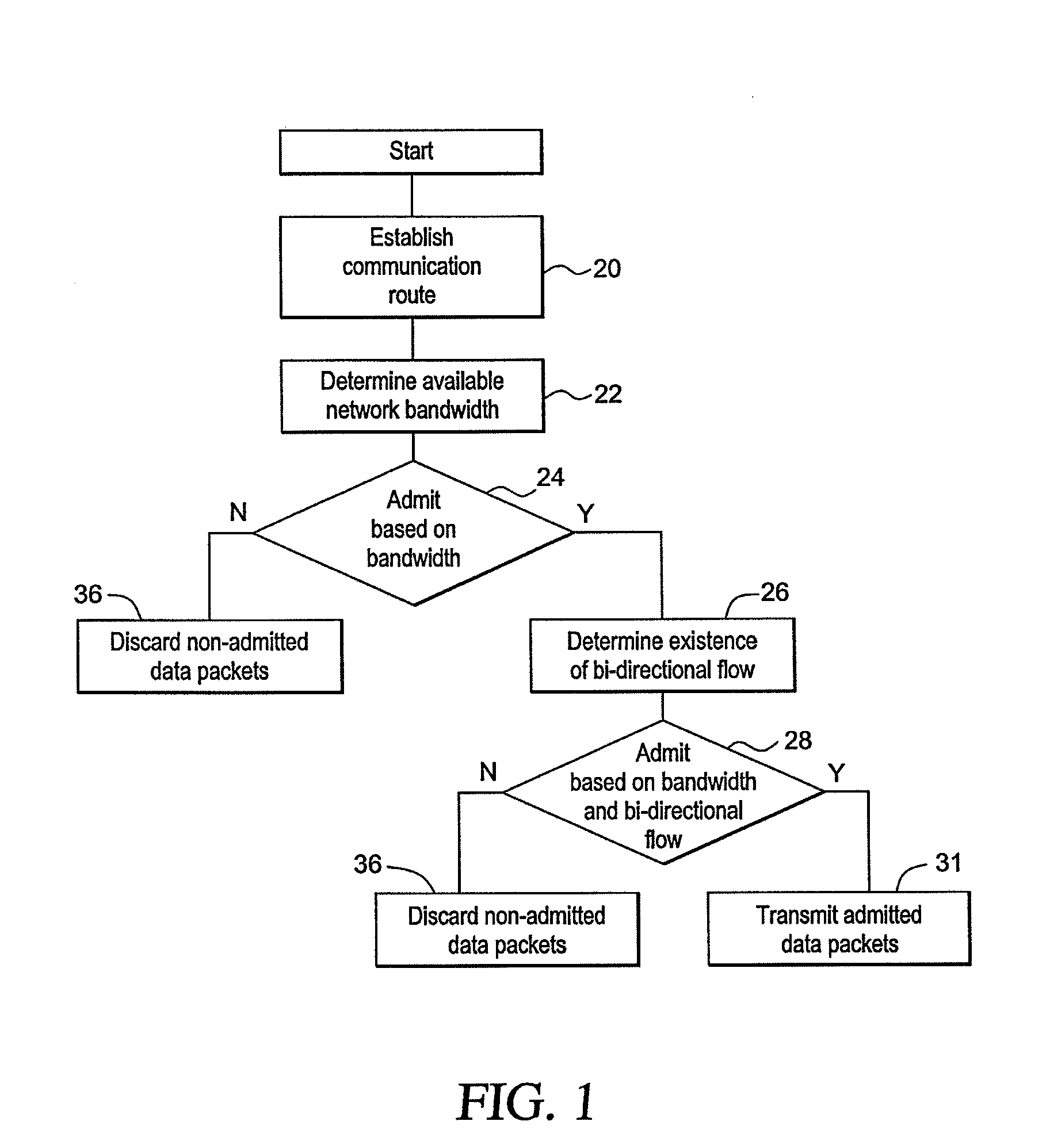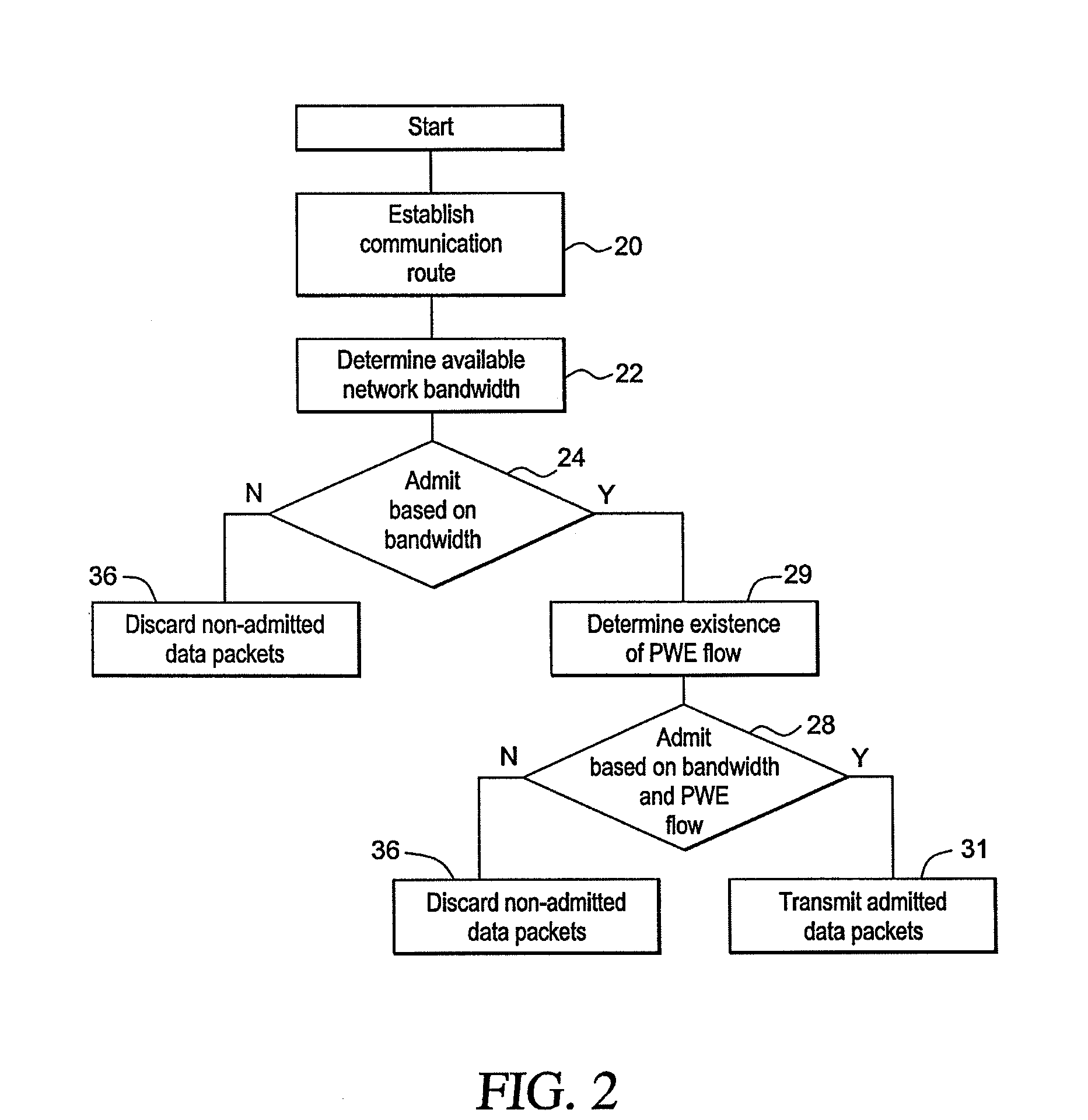Method and system for controlling link saturation of synchronous data across packet networks
a packet network and synchronous data technology, applied in the field of telecommunications network control, can solve the problems of reconstructed t1 experiencing underflow, t1 running, replacement data arriving too late to be forwarded on the reconstructed telecommunications service, etc., and achieve the effect of lessening the potential for overload
- Summary
- Abstract
- Description
- Claims
- Application Information
AI Technical Summary
Benefits of technology
Problems solved by technology
Method used
Image
Examples
example 1
[0070]An exemplary application is T1 transport over the CESoPSN version of PWE. A T1 consists of 8000 frames / second of 193 bits for a net bit rate of 1.544 Mbps. The 193 bits consist of 1 framing bit plus 24 Digital Signal Zeroes (DS0s) of 8 bits each. In CESoPSN, the system does not transport the entire T1, instead, the system transports the (operator) selected DS0s.
[0071]In order to create data packets, selected DS9s are taken from some number of T1 frames. The more frames there are, the larger the packet is and the longer the delay introduced by its creation is. The more DS9s that are selected, the larger the packet is, however, there is no delay effect associated therewith. Larger packets are more efficient to transport because the packet header is 62 bytes long and must be included in each packet.
[0072]Set A: With 32 frames / packet and all 24 DS9s selected, packet size is 62 header bytes plus 32 frames multiplied by 24 bytes / frame, which equals 830 bytes. A packet rate of 8000 f...
example 2
[0078]FIG. 6 shows an exemplary T1 PWE connection set-up procedure. In FIG. 6, timing flows from top to bottom. A first event, labeled “context admin up,” indicates that the operator activates the PE element of a PWE traffic flow. This triggers an Address Resolution Protocol (ARP) message to determine if the destination is reachable. If it is not, ARPs will be repeated indefinitely until a response is received or the operator deactivates the flow. When the ARP request reaches the RE element, a response is generated and returned. At this point, the edge elements know they can communicate with one another, but they do not know whether the required network bandwidth is available.
[0079]Upon receiving the ARP response, the transmitting PE element begins generating traffic. This traffic is identified at the RM, which determines the required capacity and makes two decisions: is there capacity, and is there bi-directional PWE flow. In this case, there is capacity but no return flow. The RM ...
example 3
[0083]FIG. 7 shows an exemplary T1 PWE connection tear-down procedure. In FIG. 7, timing flows from top to bottom. The halting of one direction of flow is shown. The RMs detect the interruption and start timers. If the traffic does not resume, the timers expire and the flow is recognized as uni-directional. The first RM blocks the remaining direction of traffic flow. Both RMs release the capacity reserved for this flow and make it available for a new flow or possible re-establishment of the current flow.
[0084]The following non-limiting examples demonstrate the ability of the invention to handle more complex cases, e.g., redundant network paths, multiple redundant network paths, and multiple provider edge nodes. In these types of complex cases, if failures collapse too much traffic onto a single link, prior systems would randomly discard traffic thereby rendering all the PWE useless because too many dropped packets results in too much noise and an inability to recover appropriate tim...
PUM
 Login to View More
Login to View More Abstract
Description
Claims
Application Information
 Login to View More
Login to View More - R&D
- Intellectual Property
- Life Sciences
- Materials
- Tech Scout
- Unparalleled Data Quality
- Higher Quality Content
- 60% Fewer Hallucinations
Browse by: Latest US Patents, China's latest patents, Technical Efficacy Thesaurus, Application Domain, Technology Topic, Popular Technical Reports.
© 2025 PatSnap. All rights reserved.Legal|Privacy policy|Modern Slavery Act Transparency Statement|Sitemap|About US| Contact US: help@patsnap.com



